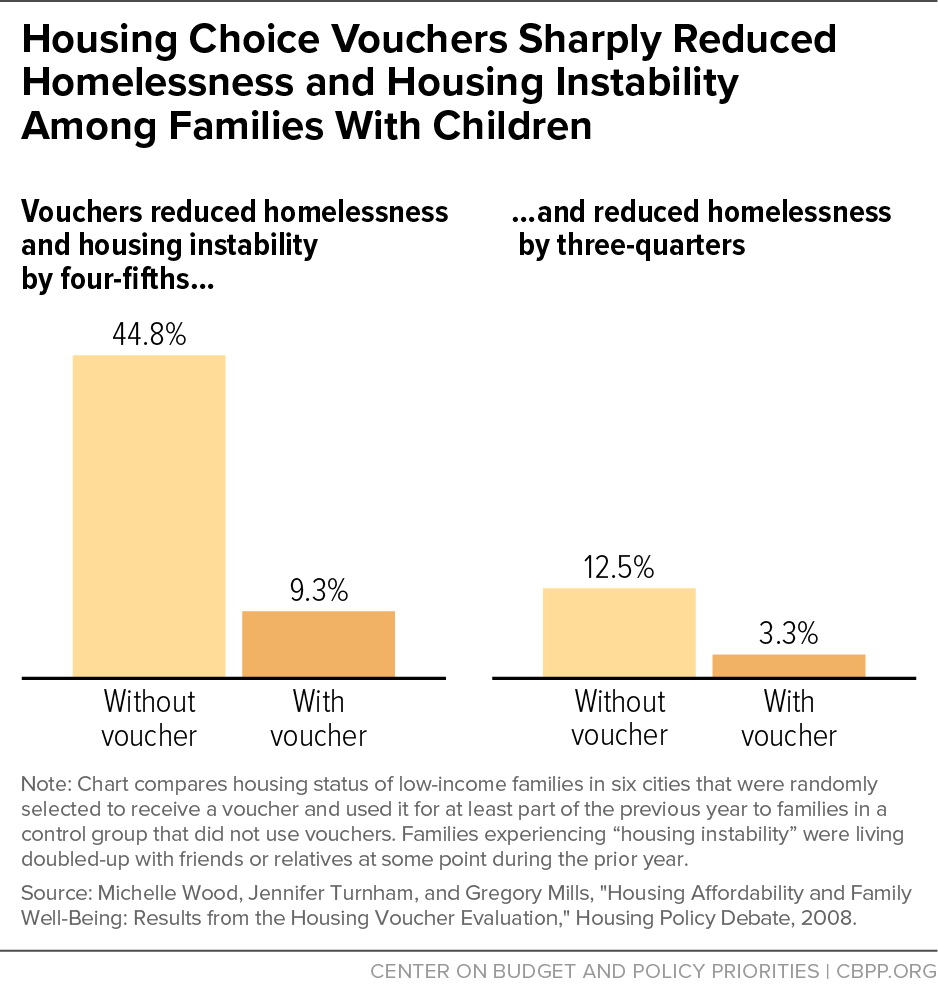BEYOND THE NUMBERS
Housing Vouchers Work: Protecting Children from Hardship, Improving Their Chance to Succeed
This is the next post in our “Housing Vouchers Work” blog series, which provides the latest facts and figures about the Housing Choice Voucher program, the largest rental assistance program to help families with children, working people, seniors, and people with disabilities afford decent, stable housing.
Due to rising rents, many low-income families pay very high shares of their incomes for housing. They may miss rent payments to meet other basic needs, and they frequently experience eviction or even homelessness. More than 1.29 million school-age children in America lived in families without homes of their own during the 2014-15 school year, Education Department data show. But Housing Choice Vouchers are highly effective at protecting children from these risks.
Rigorous research shows that vouchers — which enable families to rent decent, modest, private-market housing for about 30 percent of their income — sharply reduce the frequency with which low-income families move and the share of such families that live in overcrowded housing, doubled up with other families, in shelters, or on the streets (see chart).
Moreover, by stabilizing a child’s housing, vouchers can profoundly affect other dimensions of the child’s life for the better. In one rigorous study in which homeless families received vouchers, the vouchers lowered the chances that a child would be removed from his or her family and placed in foster care and reduced the frequency with which children had to switch schools. In addition, children in these families experienced fewer sleep disruptions and behavioral problems and were likelier to exhibit positive social behaviors (such as offering to help others or treating younger children kindly). The vouchers also resulted in lower rates of alcohol abuse, domestic violence, and psychological distress among the adults with whom children lived.
By reducing families’ rent burdens to around 30 percent of their income, vouchers also free up resources for other basic needs. Families with affordable rents on average can spend more on food, clothing, and health care than those that pay very high shares of their income for housing. Overall, vouchers and other rental assistance lifted 1.4 million children above the poverty line in 2014 (using the federal government’s Supplemental Poverty Measure, corrected for underreporting of benefits).
Vouchers can improve children’s long-term chances for success, research also suggests. For example, one study found that each additional year a child’s family uses a voucher is associated with an increase in the child’s adult earnings and a drop in the chances that he or she will be incarcerated.
Vouchers are especially effective when they help families move to high-opportunity neighborhoods with strong schools and low poverty and crime. Children whose families use vouchers to move to low-poverty areas when they’re young earn 30 percent more as adults and are likelier to go to college and less likely to become single parents, research shows. Poor black children in families with vouchers are twice as likely to live in low-poverty areas as poor black children overall.
Vouchers could do even more, however, to provide families access to low-poverty areas than they do today. Policy changes (including some already under way) could boost this aspect of the program’s performance.

